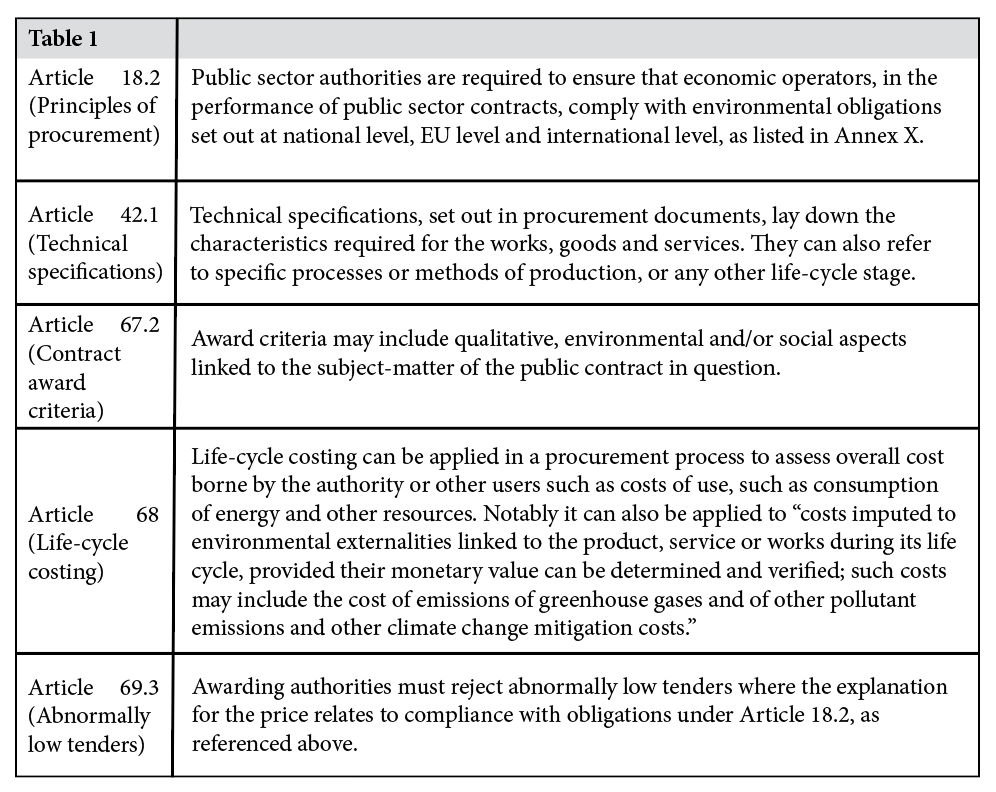How green and environmental considerations are impacting State purchasing in the construction sector
Following our article in Issue 2 of Irish building looking at climate clauses in construction contracts, this article looks at how green and environmental considerations are impacting State purchasing in the construction sector, and considers the relationship between public procurement processes and the requirement to reach net zero.
How is the public sector adapting to green requirements?
There are highly ambitious targets to reduce greenhouse gas emissions across all sectors. Law and policy often mandate that the public sector shows leadership by making swifter progress, particularly through decarbonisation of its building and transport stock. For example, in negotiations to finalise a Recast Energy Performance of Buildings Directive, MEPs want to see all new buildings occupied, operated or owned by the public sector being zero-emission by 2026 (as opposed to 2028 for other buildings). This will require Governments to act as pioneers in this respect.
To achieve the transformation required, awarding authorities will need to embed greenhouse gas emission reduction at every stage of the public procurement processes. The 2020 Programme for Government committed to implementing green public procurement (“GPP”) in all tenders using public funds by 2023 and the Climate Action Plan 2023 commits to updating the EPA’s GPP Guidance for the Public Sector in Q3 2023.
GPP means “a process whereby public / semi-public authorities meet their needs for goods, services, works and utilities by choosing solutions that have a reduced impact on the environment throughout their life-cycle, as compared to alternative products/solutions.”1 Effectively an authority will be required to look at the bigger picture in terms of the product / service / works they are purchasing and consider its impact on the environment for the entire project life cycle, starting with sourcing and supply chain, production and manufacturing processes, and site working practices, through to the sustainability of distribution, operation, use, recycling and final disposal.
There is sometimes a perception that public procurement legislation stymies innovative approaches to embedding environmental considerations in public competitions. On the contrary, however, Directive 2014/24/EU on public procurement supports green purchasing, as shown in the examples in table 1.
On a practical level, what are some examples of what awarding authorities can do?
Market Engagement
The contracting authority should explore the potential of innovative solutions through appropriate pre-market engagement and consider what is required from the outset. If the product / service / works is in existence on the market, specific green criteria should be considered in the tender documents. Otherwise, engagement gives an opportunity to encourage innovation and collaboration. This is also an opportunity to hear about regulatory hurdles to sustainable solutions (for example in planning and building control), and for the awarding authority to feed this back, as appropriate, to the relevant Department.
Selection Criteria
Contracting authorities can assess bidders on their previous experience and capacity to deliver GPP aspects of a contract. Some examples are set out below.
– Human and technical resources:
Does the bidder have the capacity to deliver what the contracting authority requires?
– Previous experience / references:
Can the bidder demonstrate previous experience in respect of the current requirement, including experience relating to GPP?
– Professional qualification / certificates: Can the bidder adequately evidence that they are proficient or skilled in delivering the requirement in a sustainable manner, in accordance with certain qualifications?
– Environmental management system:
Does the bidder have in place environmental management systems, which assist in identifying, managing and controlling their activities that impact on the environmental?
– Supply chain management:
Can the bidder adequately show where supply chains are sourcing materials, and that it is being done in a sustainable and ethical fashion? How is this being monitored and reported on?
Award Criteria
Award criteria can harness the potential of a well-developed technical specification to support energy efficiency, extended warranty periods, circularity and full life cycle costing.
At the heart of public procurement, we will still need to respect the core principles. Therefore, even with the application of GPP criteria in tender documents, this must be applied in a non-discriminatory manner, and be related and proportionate to the subject-matter of the contract.
Contract
Last but not least, the form of contract needs to be considered at the outset. Contracts will increasingly include obligations to report on emissions, and other green performance criteria. Once that becomes a requirement, the question arises around the further mechanisms that will help drive green processes and outcomes: for example, the inclusion of carbon budgets, incentives to improve on performance as the contract is delivered, and mechanisms (such as remediation plans) to get the parties back on track if performance becomes sub-optimal from a green perspective.
Talk of green clauses bring us on to collaborative contracting. While this is gaining more traction in private sector contracts, and posing some challenges in public sector contracts, it is possible to utilise this to develop innovative solutions as projects progress. The key is to frame clear and transparent contract mechanisms from the start. In this context it is worth bearing in mind the role of the public sector in delivering the Climate Act Plan 2023, described as follows:
We will lead by example, embedding climate action as a central value across all public sector organisations, relentlessly focussing on continuous improvements that deliver real progress.
Keeping an eye on the budget
We are now halfway through the term of our first five-year carbon budget. By the end of the second carbon budget in 2030, the public sector is required to have cut its greenhouse gas emissions by 51% compared to 2018 levels and to have improved its energy efficiency by 50%. This is to be done by specific actions to decarbonise its buildings, transport, waste and energy usage, required to be set out in an annually updated Climate Action Plan.
While the concept of GPP is not new, the EPA reported that only 24% of the total number of procurement contracts over €25,000 which were signed in 2021 incorporated GPP – this was down from 26% in 2020. While GPP has been a voluntary structure, the legislation requiring action to reduce emissions is not. Driving down emissions through the effective and focused use of procurement processes is here to stay.
Author: Ciara Dooley, Senior Associate, Infrastructure, Construction, and Utilities. www.arthurcox.com
1. gov.ie – Public Sector Climate Action (www.gov.ie)

Follow Irish building magazine on LinkedIn for the latest news and updates.

